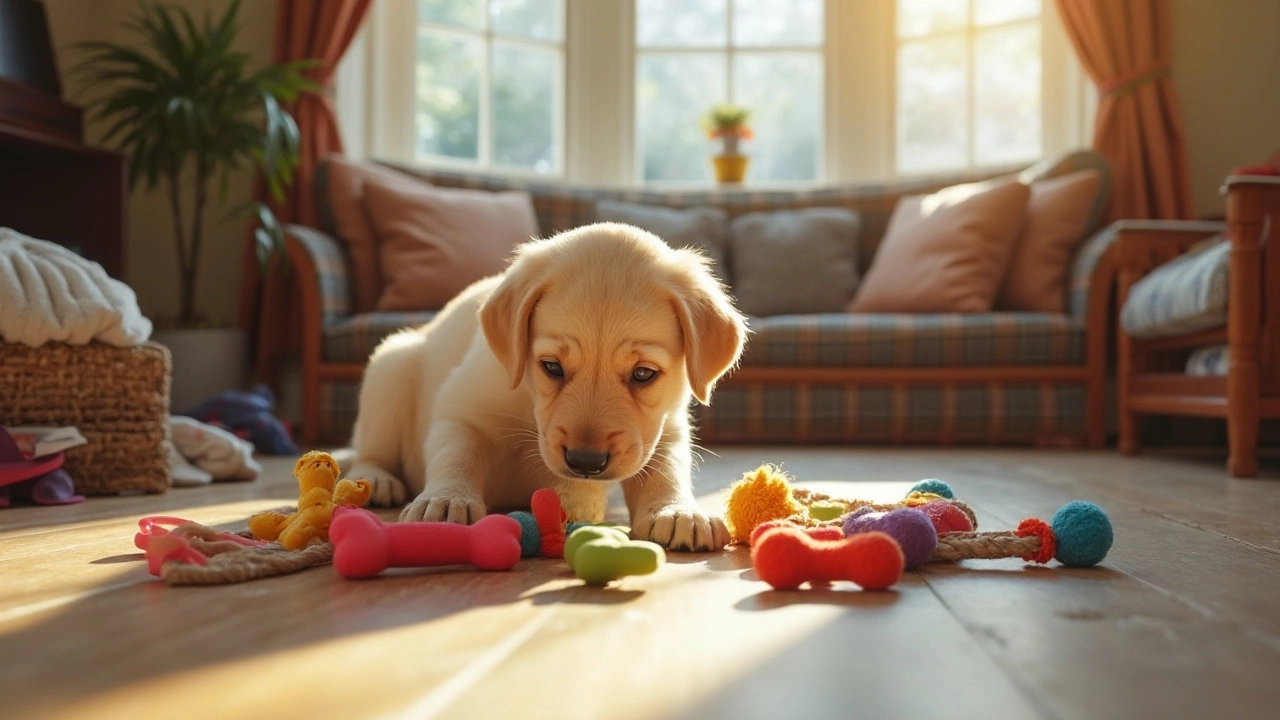Puppy Chew Toys: What to Choose and How to Use Them
If you’ve just welcomed a new pup, you’ve probably seen the endless rows of chew toys at the store. They look cute, cheap, and fun, but not every toy is right for a growing puppy. The right chew toy can soothe sore gums, keep teeth clean, and stop your little furball from destroying shoes. The wrong one can break apart, become a choking hazard, or just sit in a corner gathering dust.
Why Puppies Need Chew Toys
Puppies chew for three main reasons: teething pain, boredom, and natural hunting instinct. When their baby teeth fall out, the gums feel raw, and a soft yet sturdy toy gives relief. Boredom‑induced chewing can turn into destructive habits, so a good toy redirects that energy. Finally, chewing mimics the way wild dogs break down prey, so offering a safe outlet satisfies that instinct without ruining your furniture.
How to Pick Safe and Fun Chew Toys
Start with size. A toy that’s too small can be swallowed; a toy that’s too big may be hard to carry and won’t satisfy the chew. As a rule, the toy should be at least as long as your puppy’s muzzle. Next, check the material. Soft rubber, natural rope, and sturdy canvas are usually safe. Avoid toys with tiny detachable parts, loud squeakers that can pop, or hard plastic that can splinter.
Durability matters, but don’t chase the “indestructible” label. Even the toughest toys will wear down over time, and that wear signals when it’s time to replace them. Look for toys that show a clear wear pattern – a worn spot means the puppy is focused there and the rest of the toy is still holding up.
Dental health is a bonus. Toys with ridges, nubs, or a textured surface act like a toothbrush, grinding down plaque as the pup chews. A quick swipe of dog‑safe toothpaste on the toy can boost the cleaning effect.
Flavor can keep the puppy interested, but natural flavors are safer than artificial ones. Many brands use chicken, peanut butter, or beef infused into the material. If you’re wary of additives, stick to plain rubber or untreated rope and add a dab of frozen broth for extra appeal.
Rotate toys every few days. Puppies lose interest quickly, so swapping in a fresh toy keeps the excitement high and prevents boredom‑driven nipping. Keep a small stash of inexpensive, low‑risk toys for rotation while reserving the higher‑cost, premium options for special training moments.
Cleaning is simple but essential. Most rubber toys can be tossed in the dishwasher or boiled for a few minutes to kill germs. Rope toys should be washed in the washing machine on a gentle cycle. Let everything dry completely before giving it back to your pup.
When you first introduce a chew toy, supervise the play. Watch how the puppy bites, pulls, and chews. If you see pieces breaking off, replace the toy immediately. Over time, you’ll learn which textures your pup prefers – some love a squeaky plush, others favor a hard rubber ball.
Finally, match the toy to the training goal. A sturdy chew stick works great for “leave it” drills, while a treat‑filled puzzle can reward calm behavior. Using chew toys as part of a training routine reinforces good habits and makes learning fun.
With these tips, you can pick chew toys that soothe, protect, and entertain your puppy without breaking the bank or the peace of your home. Happy chewing!

Puppy Chew Toys: What Should I Give My Puppy to Chew On?
Worried about your puppy chewing on everything in sight? This article breaks down safe and smart choices for puppy chew toys. You’ll find which toys are good for teething, what to avoid, and little tricks to keep your puppy’s teeth off your shoes and furniture. Learn what’s best for their growing teeth and what toys can help them stay calm and happy. Say goodbye to ruined socks!
View more